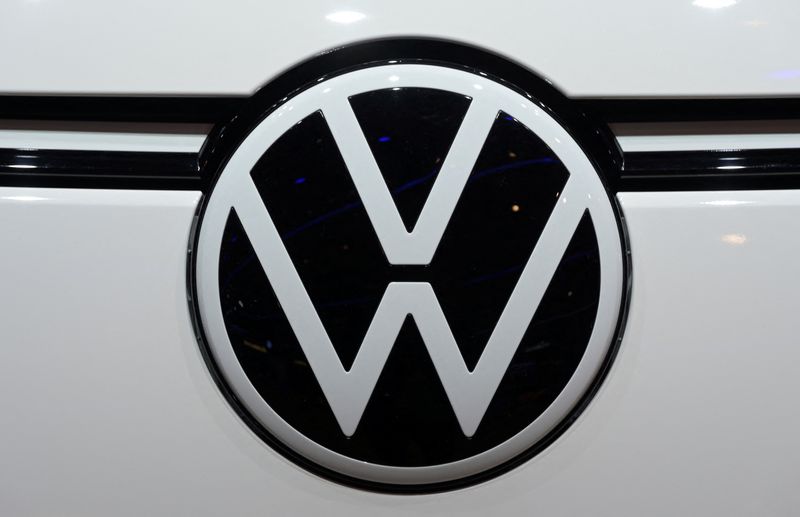Volkswagen has gas supplies for winter but could see shortages next year
2022.09.22 11:54
[ad_1]

© Reuters. FILE PHOTO: The logo of carmaker Volkswagen Commercial Vehicles is pictured at the IAA Transportation fair, which will open its doors to the public on September 20, 2022, in Hanover, Germany, September 19, 2022. REUTERS/Fabian Bimmer
BERLIN (Reuters) -Volkswagen should be able to maintain production in the next 5-6 months if Germany continues to fill its gas reserves, but rising energy prices and instability in supply chain networks present a risk to global production, an executive said on Thursday.
If gas deliveries to Germany from Russia through the Nord Stream 1 pipeline do not resume, the carmaker expects shortages from June of 2023, the executive, who declined to be named, added, basing his forecast on a Goldman Sachs (NYSE:) study of gas supplies to Germany.
With Russian gas flows down sharply in response to European sanctions against Moscow over the invasion of Ukraine, Germany is scrambling to secure energy supplies from elsewhere.
European gas storages are now 85.6% full, with stocks in Germany close to 90%, data from Gas Infrastructure Europe showed, but what the picture will look like after winter is less clear.
Planned short-term measures to protect from shortages of components include stocking up in warehouses and transport pipelines like ships and trains. Mid-term solutions could include relocating production to other regions.
Separately, another Volkswagen (ETR:) executive Michael Heinemann, who is spokesman for VW Kraftwerk GmbH, told a media call that the carmaker will reduce its natural gas intake by over 20%, the minimum set by the government.
In total, it could reduce its consumption across European locations by a mid double-digit percentage figure, he added, without specifying an exact number.
But suppliers in energy-intensive areas like glass and chemicals will not be able to shoulder the gas and electricity price increases for long, VW executives warned.
Though most car parts made in Europe are used by European plants, some are shipped to plants abroad. Just one missing piece can bring production to a standstill, as shown by the fallout from the semiconductor shortage of recent years.
[ad_2]
Source link








